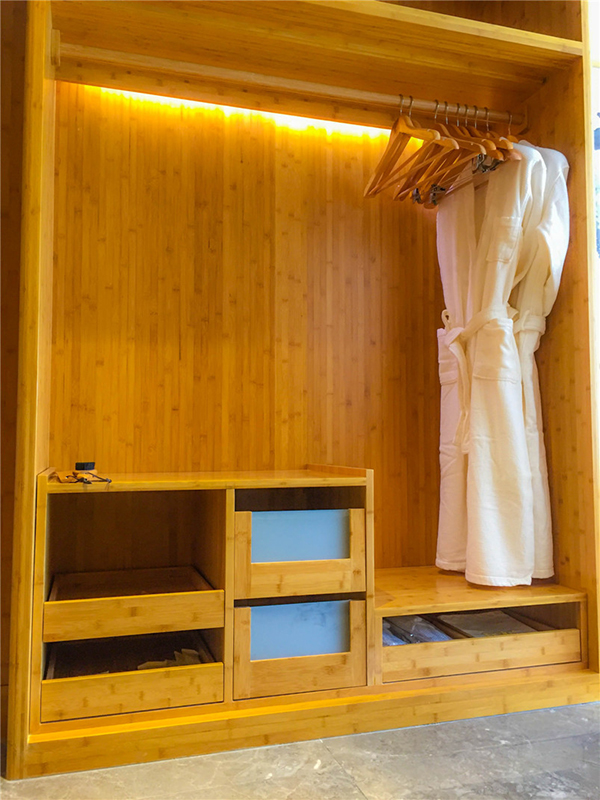Bamboo Plywood- Characteristics and Constructions
The most popular among them is plywood: the price does not bite, and the quality pleases. This simple, at first glance, the material has many varieties, and each has its pros and cons.
One of the novelties of the Indian sawn wood market is bamboo plywood. We'll figure out what kind of material it is and why it should be used.
This type of plywood is made of bamboo. Bamboo plant is excellent for plywood production, as it grows rapidly, ensuring the constant availability of raw materials. What is important, bamboo has many useful properties that are transferred to the plywood produced from it.
Advantages of plywood from bamboo:
• High moisture resistance.
• Natural resistance.
• Natural protection against insects.
• Low price.
Due to these properties, plywood made of bamboo is an excellent material for the arrangement of water supply networks and the erection of small buildings. But this does not end with its application. Plywood made of bamboo is suitable for formwork.
Bamboo plywood can be laminated, due to which its appearance improves, and it becomes more resistant to the action of moisture and harmful substances. Apply this kind of plywood to the skin of containers, which are then used for chemicals, poisons, and drugs.
Laminated bamboo plywood does not wear out for a long time - it allows to use it for the lining of vans and train cars, river ships and ships. When constructing large objects, such plywood is very convenient, since large solid sheets manufacture it, and it is also lightweight, which makes it possible to conduct assembly works effortlessly.
There is also a corrugated plywood made of bamboo that extends the area of its application.
But this beautiful material has its minuses. It is known that the stalk of the bamboo is hollow, which means that the plywood has the same property. Because of this, it is impossible to make beams or boards from plywood. This slightly limits the scope of bamboo plywood in construction.
How to make plywood from bamboo? It is a fascinating way. Bamboo is too thin; it cannot be lumbered, like coniferous or deciduous wood. Therefore, plywood is produced by splitting the plant. Then the chips are placed in layers - symmetrically about the central layer and perpendicular to the adjacent layers, pressed, glued at elevated temperature and pressure, or phenolic glue or formaldehyde resins are used.
This board is obtained by gluing wood veneers so that the fibers of the consecutive veneers from a certain angle, generally straight, to balance the board. Sometimes veneer layers are used instead of coverings. The number of plates or layers is usually odd to balance the board by the symmetry of the section. The traditional concept of plywood, veneer board has been enriched by incorporating other materials into the soul. These differ from sandwich panels in that their faces are veneered.
It should be noted that along with the advantages of bamboo has also a significant disadvantage: unlike pine or any other tree, bamboo is hollow inside. In this regard, making a bamboo board or bar is not possible, and therefore its use in modern construction is limited. However, the hollow stem does not interfere with the production of plywood
As is known, conventional coniferous or deciduous plywood is made of several layers of peeled veneer. Bamboo cannot be lumbered - it is too thin for this - and therefore wood chips are used as raw material for the production of plywood.
The layers of wood chips are also placed as layers of veneers - perpendicular to the adjacent layers and symmetrically with respect to the central layer. Bonding of chips is carried out at elevated temperature and pressure. Phenolic and formaldehyde resins are used as glue (the latter, as a rule, prevail).
Structural characteristics
A typical bamboo plywood panel has wood veneers on the face of a higher grade than the core veneers. The main function of the core layers is to increase the spacing between the outer layers, where the bending stresses are higher, which increases the resistance of the panel to be bent. As a result, thicker panels can cover greater distances under the same loads.
In bending, the maximum stress occurs in the outermost layers, one in tension, and the other in compression. Bending stress decreases from the maximum to the coating layers almost to zero in the central layer. The shear stress, on the other hand, is higher in the center of the panel, and zero in the outer fibers.
Application of bamboo plywood
Most of the bamboo plywood produced in the world is used as a formwork. The advantages of formwork plywood are obvious - in the first place it is high strength, exceptional moisture resistance and ability to maintain its properties under the influence of various chemicals. In addition, bamboo plywood is relatively inexpensive - of course, only if it does not have to be transported.



 皖公网安备 34180202000049号
皖公网安备 34180202000049号